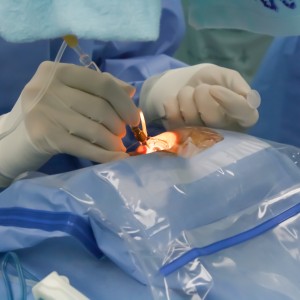 Researchers at Tokyo Medical and Dental University in Japan published a new technique for successful posterior polar cataract surgery in the Journal of Cataract & Refractive Surgery. The study is entitled “Pre-surround division technique: Precise cracks surrounding the posterior opacity prior to phacoemulsification in posterior polar cataract surgery.”
Researchers at Tokyo Medical and Dental University in Japan published a new technique for successful posterior polar cataract surgery in the Journal of Cataract & Refractive Surgery. The study is entitled “Pre-surround division technique: Precise cracks surrounding the posterior opacity prior to phacoemulsification in posterior polar cataract surgery.”
Posterior polar cataract has been reported in approximately 20% of all cataract cases and is usually linked to inherited defects in the posterior capsule of the eye. This condition is strongly associated with complications during cataract surgery such as posterior capsular rupture due to a strong adherence of the cataract opacity to the posterior capsule. Surgery in these patients can be challenging and should only be performed by highly experienced surgeons.
Three posterior polar cataract surgery strategies are currently used: intracapsular cataract extraction, posterior approach, and anterior approach. Researchers have now developed an accurate, safe and easy pre-surround surgical technique that allows the division of the cataract nucleus into three pieces without rotation of the eye lens, avoiding posterior opacity. This technique allows the generation of precise cracks surrounding the posterior opacity before phacoemulsification (where the lens is emulsified with an ultrasonic device and aspirated from the eye), without causing intraoperative or postoperative complications and resulting in a successful implantation of a new intraocular lens.
Researchers have studied several techniques for nucleus division. “Through my surgical experience (…) I realized that the prechopper used for the prechop technique was the best device for making precise cracks in the division process,” said the lead author of the study Dr. Koju Kamoi in a news release. “Also, for posterior polar cataract surgery, I discovered that precise division of the lens avoided polar opacity before phacoemulsification, which was the key to the success of the surgery. This naturally linked the surgical device to the strategy of posterior polar cataract surgery.”
Dr. Kamoi has employed this technique over the past seven years but in only six eyes, as posterior polar cataract is a rare event. “Still, I have confirmed the technique’s efficacy and safety.”
“Several methods for dividing the nucleus into more than two pieces without rotating the lens have been reported; however, they require a high skill level,” noted Dr. Kamoi. “In contrast, my pre-surround division technique can easily divide the nucleus into three pieces, again without rotating the lens. Furthermore, making accurate cracks before phacoemulsification with this technique can avoid accidental cracks over polar opacity. Taken together with surgical results, this technique is safe and effective compared with previously reported methods.” A follow-up on these rare and complicated cataract cases should be performed to confirm the safety of the technique.


